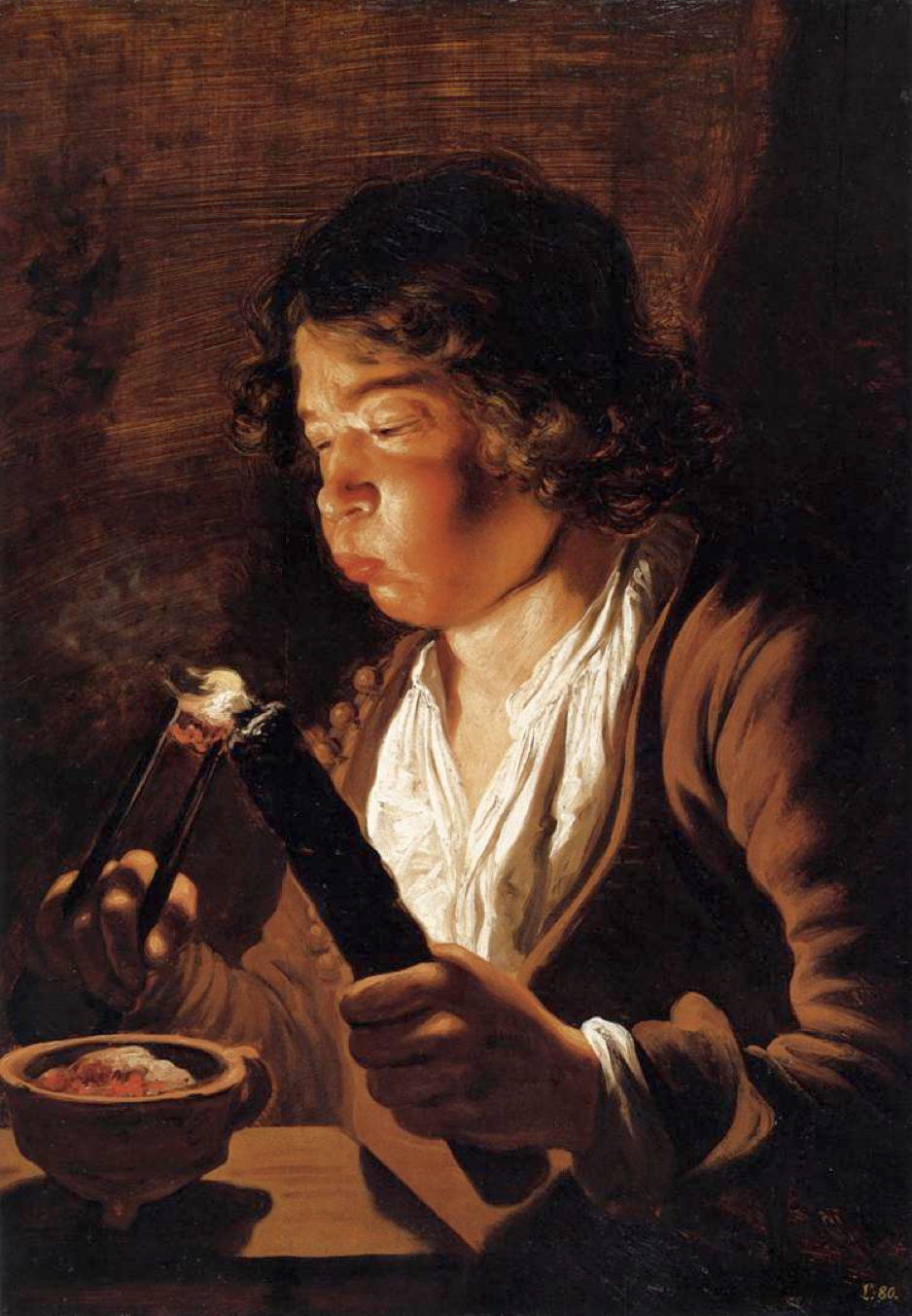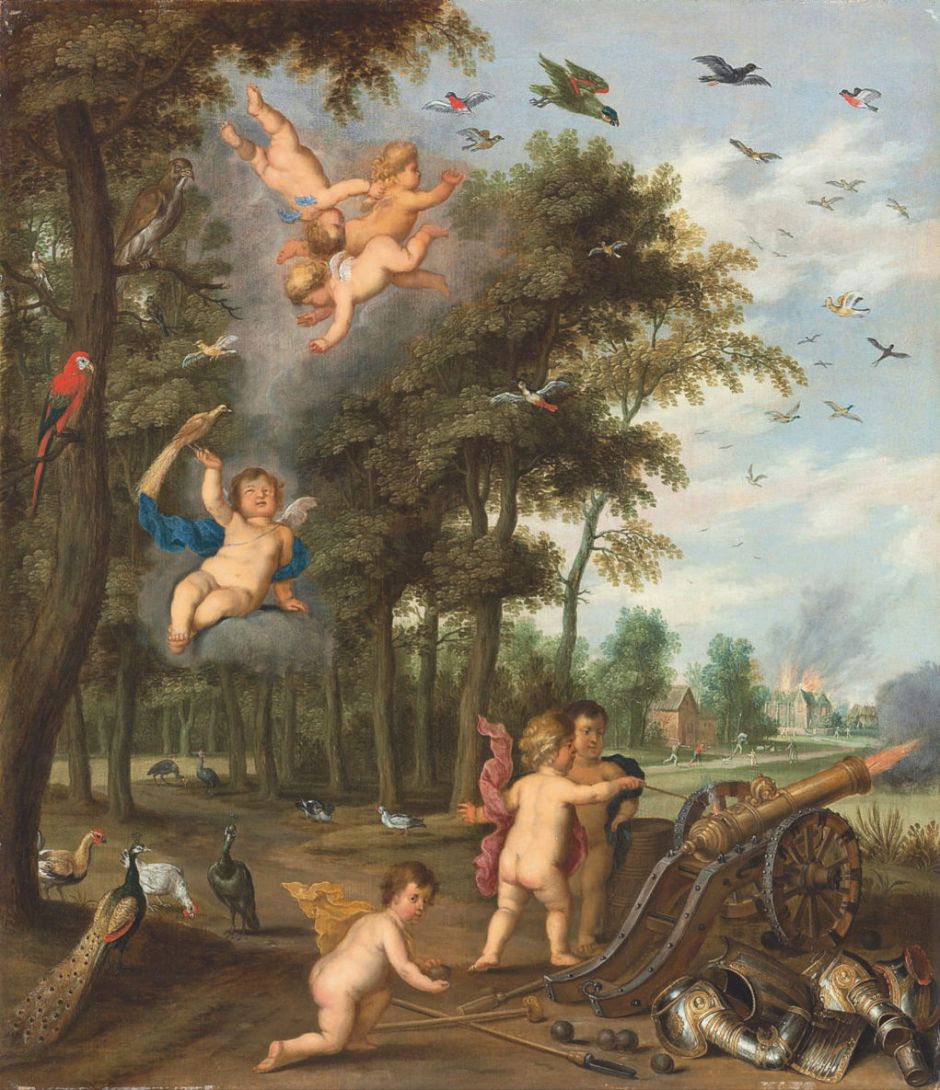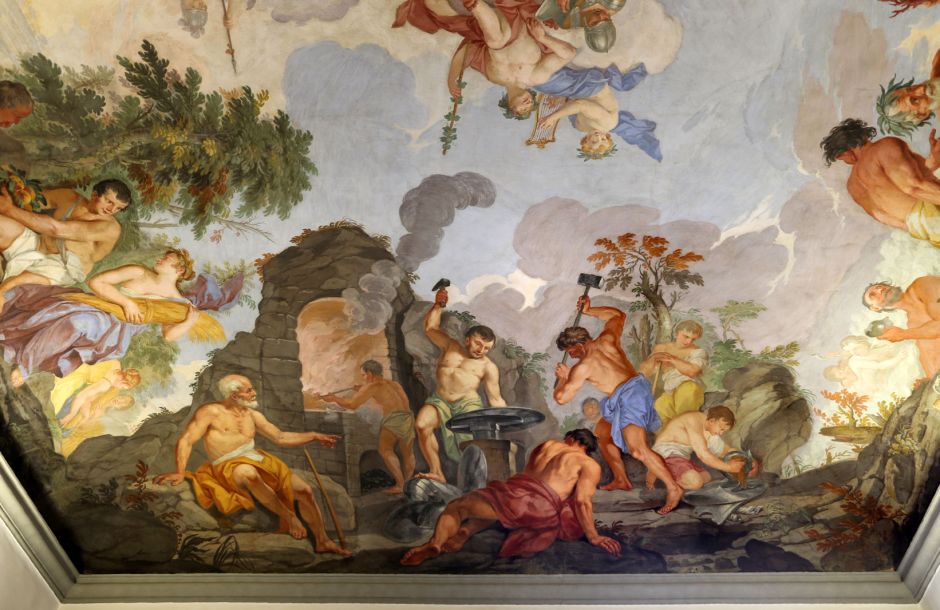In the first of these two articles showing paintings of the four elements, I traced the theme from the wonderfully idiosyncratic images of Giuseppe Arcimboldo to the end of the sixteenth century. I’m not sure when the Brueghel family first took up this theme, but my first example is a collaboration between Jan Brueghel the Elder and Hendrick de Clerck from early in the seventeenth century.

Abundance and the Four Elements (c 1606) is the whole series rolled into one. At the lower right and centre is earth with a cornucopia, the upper left is air and fire, and lower left is water.

In 1624, Jan Lievens brought the four ages of man together with the elements in a unique series. This is his Fire and Childhood, an example of chiaroscuro used to model real lighting conditions. The boy is using a glowing coal held in tongs to light the wick of a candle.

A few years later, Jan van den Hoecke collaborated with Adriaen van Utrecht in this classically inspired Allegory of the Four Elements (1630-31). At the right is one of the earth goddesses, Cybele or Ceres perhaps. In the centre are Minerva and Diana, I think, with a link to the air. A river god at the lower left is clearly water, and above him at the left edge is Vulcan, for fire.

The classical references in Abraham Janssens’ Allegory of the Four Elements, which was probably painted between 1600-32, are looser still. A gnarled old matron at the left, with a castellated hat which is reminiscent of Arcimboldo, holds a cornucopia of the fruits of the earth. Next to her is a water nymph, with fish at her feet. Then there’s a winged Juno with a peacock, and at the right Mars with an early form of cannon or mortar, perhaps, belching flames and smoke.

Artus Wolffort’s The Four Elements was probably painted between 1600-41, and attempts a similar composition. On the left is Vulcan, then a bird catcher who could be intended to be Apollo. On the right, a river god holding Neptune’s trident sits next to a goddess who is holding a cornucopia.
It was Jan Brueghel the Younger, in collaboration with Frans Francken the Younger, who seems to have capitalised on the four elements combined into a single painting, probably around 1635-40.

This undated Allegory of the Four Elements by the pair sets its four goddesses in the midst of a collection of related objects. The identities of the women are even more obscure, though. In place of a river god with his perpetual spring is a woman, and the water has turned to a cascade of fish. Fire seems to have been more of a problem to represent, and is most obvious in the red hair of the woman leaning back.

Brueghel and Francken use a similar group in the centre of their Landscape with Allegories of the Four Elements from 1635, and there are several other variants which they painted together.

Pieter van Avont and Izaak van Oosten worked together on a pair of paintings, each of which covered two of the elements. The Four Elements: An Allegory of Air and Fire from about 1641-52 is one, which has also been attributed to Jan van Kessel the Elder. They develop the broader landscape of Brueghel and Francken, but in rather less cluttered form, with mischievous putti firing a cannon, and a distant house burning.
Then the steady stream of paintings of the four elements tailed off. With the Age of Enlightenment, the better-educated came to realise that there was more to the world than just the four, perhaps.

The section of Mauro Soderini’s ceiling painting representing fire in his grand Allegory of the Elements from between 1725-51 updates the classical approach. Here’s a working furnace and smithy with the casting of iron, rather than some mythical forge operated by Vulcan alone.
There’s still one painting to come: a surprising theme from someone who set out to be a painter of modern history, the American Benjamin West.

West returned to classically-inspired allegory in Omnia Vincit Amor or The Power of Love in the Three Elements in 1809. Venus is at the left, as the goddess of Love, with her son, the winged cherub Cupid, complete with his bow and quiver of arrows. Standing near-naked with a burning torch in his left hand is Hymen, the young god of marriage, who holds three red leashes attached to symbols of three of the four elements of the classical world.
The eagle stands for the element of air, a horse-like hippocampus for that of water, and a lion for earth. This painting remained in the artist’s studio, unsold, at the time of his death, and the theme seems to have vanished ever since.

